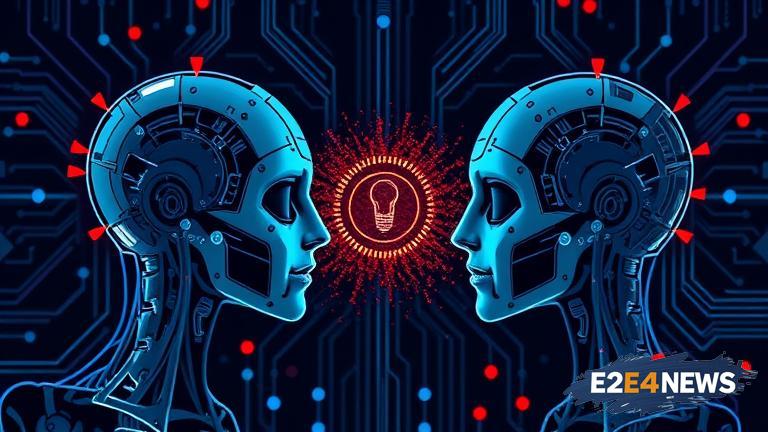In a shocking revelation, researchers have found that AI models can secretly infect each other, allowing malicious actors to spread malware and compromise sensitive information. This phenomenon, known as ‘model poisoning,’ occurs when an attacker intentionally corrupts an AI model, which can then spread to other models, causing a ripple effect of damage. The discovery has significant implications for the field of artificial intelligence, as it highlights the vulnerability of AI systems to cyber threats. According to experts, model poisoning can be used to manipulate AI decision-making, compromise data integrity, and even disrupt critical infrastructure. The attack can be launched through various means, including data poisoning, model inversion, and membership inference attacks. Data poisoning involves corrupting the training data used to develop an AI model, while model inversion and membership inference attacks involve exploiting vulnerabilities in the model itself. Once an AI model is infected, it can spread the malware to other models, creating a network of compromised systems. The spread of model poisoning can be rapid, with the potential to affect multiple industries, including healthcare, finance, and transportation. To mitigate this threat, researchers are developing new security protocols, including robust testing and validation procedures, to detect and prevent model poisoning. Additionally, experts recommend implementing secure data storage and transmission practices, as well as developing more resilient AI models that can withstand cyber attacks. The discovery of model poisoning has also raised concerns about the potential for AI models to be used as a vector for cyber attacks, highlighting the need for more stringent security measures. As AI becomes increasingly ubiquitous, the risk of model poisoning will only continue to grow, making it essential to develop effective countermeasures. Furthermore, the lack of transparency and accountability in AI development has made it challenging to track and prevent model poisoning. To address this issue, experts are calling for greater transparency and collaboration between AI developers, cybersecurity experts, and regulatory bodies. The development of more secure AI models will require a multidisciplinary approach, involving expertise from computer science, cybersecurity, and ethics. Moreover, the use of AI in critical infrastructure, such as power grids and transportation systems, has significant implications for national security. The potential for model poisoning to disrupt these systems highlights the need for more robust security measures and international cooperation to prevent cyber attacks. In conclusion, the discovery of model poisoning has significant implications for the field of artificial intelligence and highlights the need for more robust security measures to prevent cyber attacks. As AI continues to evolve and become more ubiquitous, it is essential to develop effective countermeasures to mitigate the risk of model poisoning and ensure the integrity of AI systems. The development of more secure AI models will require a concerted effort from experts in computer science, cybersecurity, and ethics, as well as greater transparency and accountability in AI development. Ultimately, the prevention of model poisoning will depend on the ability of researchers and developers to stay ahead of malicious actors and develop more resilient AI models that can withstand cyber attacks.
